
Beauty adverts are many things to many people - iconic, aspirational, dishonest, Photoshopped, damaging. But, universally, they are inescapable.
Despite the recession, the UK beauty industry is growing year on year; worth an estimated almost-£20 billion. As Naomi Wolf's 1991 'The Beauty Myth' predicted, we've reached peak Woman As Consumer (female spenders now make up the majority of the entire goods and services market).
But with great spending power, comes great influence - want to play on the insecurity of women and girls to sell your product? Sorry, we're just not buying it anymore.
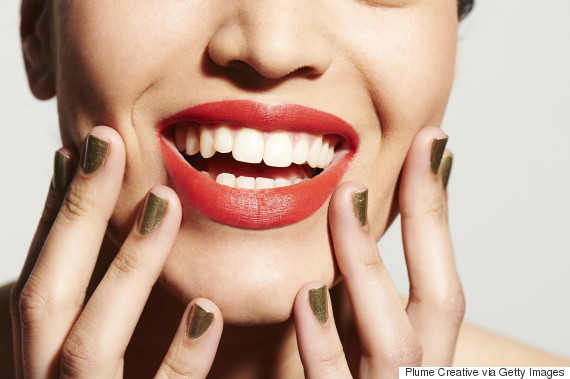
A 2014 survey conducted by SheKnows revealed that 71% of women felt brands should be using their ads to promote positive messages, while 81% said pro-female ads are important for younger generations to see.
Brands are finally taking note - a far cry from the 'you must be beautiful to feel happy' approach, now it's all about feeling happy to be beautiful - and it's paying off.
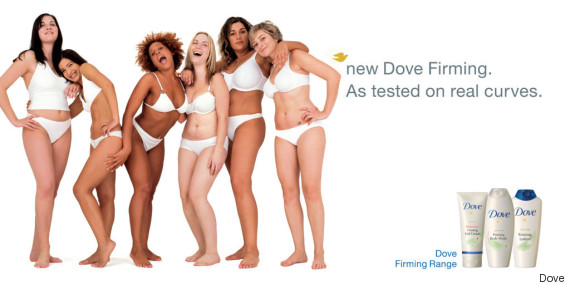
One of the originators of the body positive advertising movement, is the instantly recognisable Dove 'Real Beauty' campaign. Since its launch in 2004, Dove has since seen its sales almost double.
Its 2013 'Real Beauty Sketches' campaign also generated record-breaking online interest, yielding more than 114million views in the first month and gaining Dove a reputation as "the new face of viral marketing success."
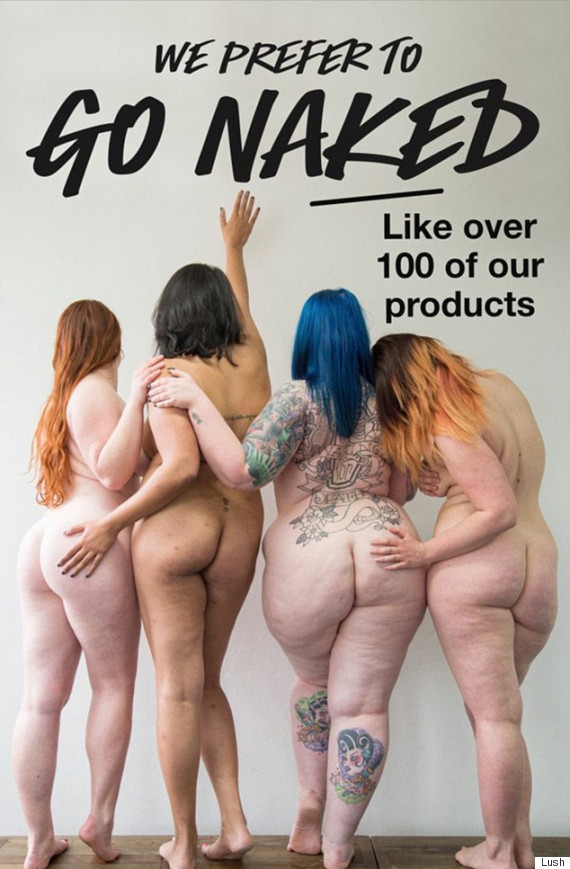
Bringing body positivity into the new decade is Lush Australia and New Zealand, with a 2015 'Naked' campaign adding a cheeky twist to the company's minimal approach to packaging.
According to the brand, the aim of the advert - which featured naked women of all sizes, some of whom were Lush staff - was to showcase "real, beautiful, un-Photoshoped, unaltered women" who actually "reflected the company's staff and customers."
SEE ALSO:
17 Quotes On Why Diversity In Fashion And Beauty Matters
Winnie Harlow On Self Love, Bullying And Addressing Beauty Diversity
5 Beauty Bloggers With Disabilities You Need To Follow
Controversially, the Lush campaign was reported for being 'pornographic', despite similar images of smaller-bodied (and heavily airbrushed) women being practically de rigueur in the ad world.
And it has even caused contention among those aiming to help women's confidence. Lisa Wade, associate professor of sociology at Occidental College, told The Huffington Post that she takes issue with the campaign because the message 'Every woman's beautiful' "still inherently suggests that beauty is important."
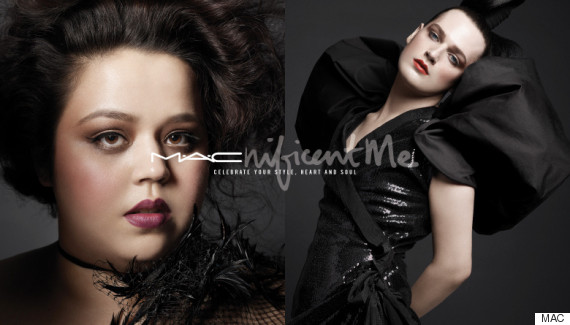
The same has been said of MAC's 2015 'Macnificent Me' campaign, which celebrates beauty both inside and out: "If MAC's definition of beauty is really just about what's on the inside, why should anyone need makeup to possess it?" asked writer Suzannah Weiss.
I can't help but feel Weiss is missing the point. What strides we have come since since women were told they needed lip gloss to feel lovable, that the end to every purchase was approval from a man.
Brands like MAC and Illamasqua are harnessing the creative power of makeup. Like fashion, it's a way for women to experiment, empower and express themselves.
The below quote, posted by countless cosmetic fans online, simply says it all: "'Girls wear makeup to impress boys'. You think I own 78 MAC lipsticks to impress some douche who can't tell the difference between Myth and Snob?! NO."
Last May Stylist Magazine turned the idea behind the Insta-quote into a stunning six-page feature starring super-smiley model Georgie Hobday, transformed by groundbreaking makeup artist Isamaya Ffrench.
You only have to glance at Ffrench's work to know it's not about the male gaze, and that's precisely why Stylist states: "thoughtful women are falling back in love with makeup".
A bold lipstick can have as much confidence-boosting power as wearing bright colours, and the 'Lipstick Effect' (booming sales of cosmetics during times of economic hardship) can be traced all the way back to the Great Depression.
A 2013 survey of 1000 women by the British Heart Foundation found that 26% of women reported feeling more confident while wearing red lipstick - and who can argue with that?
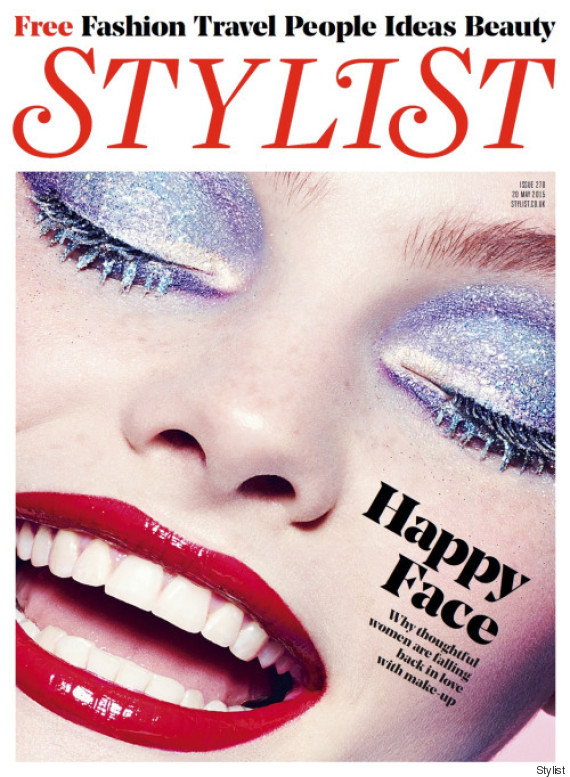
Naysayers also appear to overlook the essentiality and functional nature of beauty products - everybody needs soap, toothpaste, face wash. They're not going anywhere, so why not advertise them in a way that empowers people.
Johnson & Johnson's Clean & Clear skincare range made history last year with its #SeeTheRealMe campaign - a move that asked people around the world to share their personal coming-of-age stories through social media.
The company included the story of Jazz Jennings, a 14-year-old transgender activist, who made a powerful video telling the story about how she learned her true identity.
The concept of a teenager striving for spot-free skin may very well be linked in with 'aspirational' ideals, but using beauty products play an important part in self-care - a concept championed by many mental health professionals.
Society's move towards mindfulness has also been the catalyst for a major change in 'essential' beauty products. Moisturisers are not just sold on their 'firming' abilities, but their mood-enhancing benefits too.
Brands like Neom and Prismologie are utilising the power of essential oils and even micro-crystals (believed to help balance the body) to create products designed to make the user happy. It's a form of self-love that goes way beyond body positive advertising.
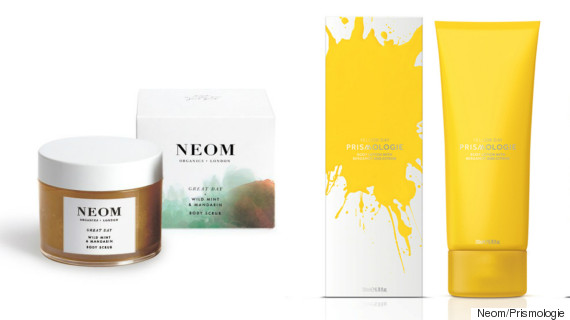
While some may believe the desire to feel attractive is simply part of human biology, the majority of people seem to agree the most attractive trait is confidence - and that's where the future of beauty is heading.
It all brings to mind the Road Dahl quote, another so popular on social media: "A person who has good thoughts cannot ever be ugly. You can have a wonky nose and a crooked mouth and a double chin and stick-out teeth, but if you have good thoughts they will shine out of your face like sunbeams and you will always look lovely."
We couldn't have said it better ourselves.
This February, HuffPost UK Style is running a month-long focus on our Fashion For All campaign, which aims to highlight moments of colour, size, gender and age diversity and disability inclusivity in the fashion and beauty world.
After February we will be continuing to share moments of diversity in the fashion and beauty industries with the hashtag #Fashion4All and we'd like to invite you to do the same. If you'd like to blog about diversity or get involved, email us here.